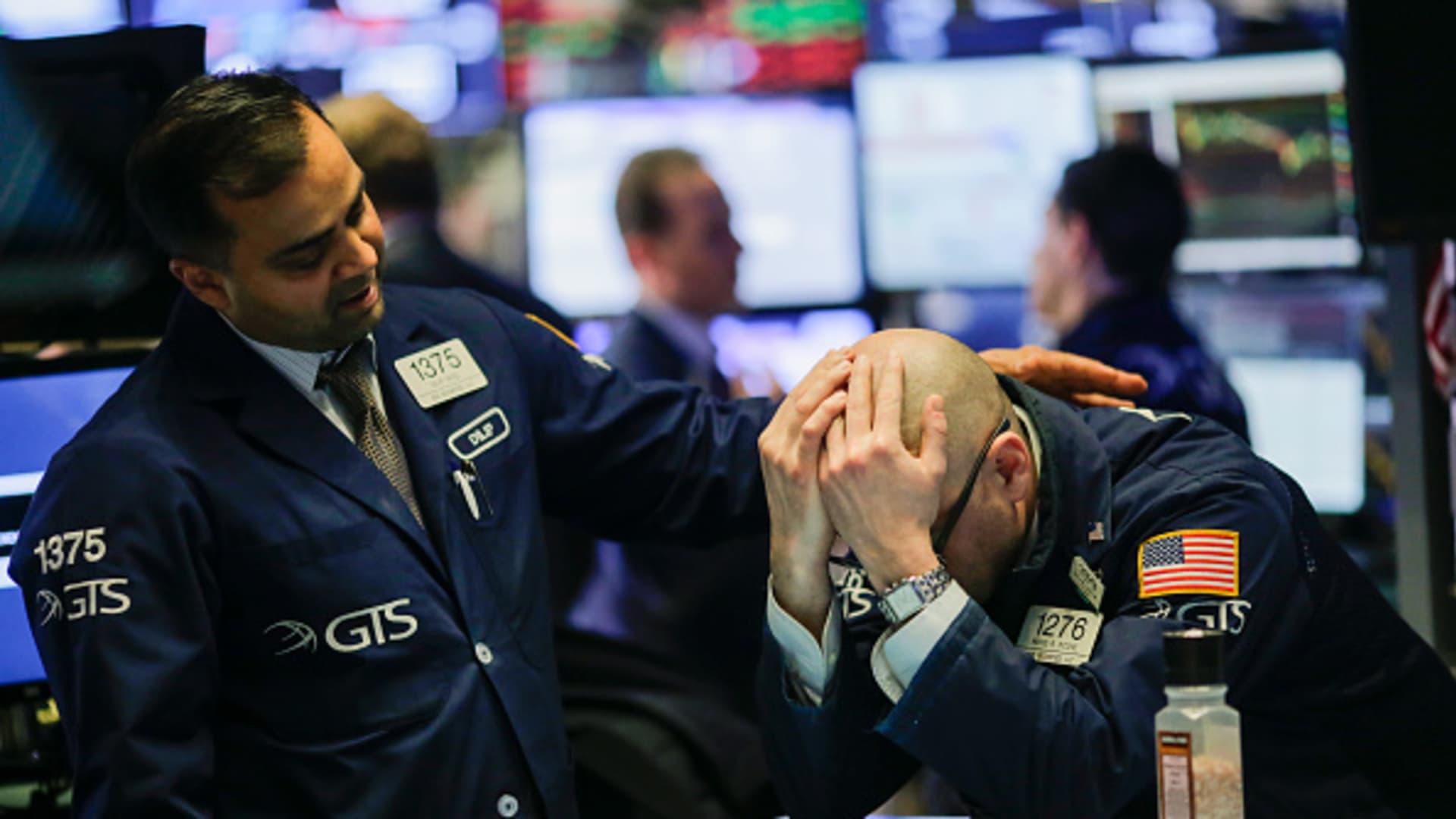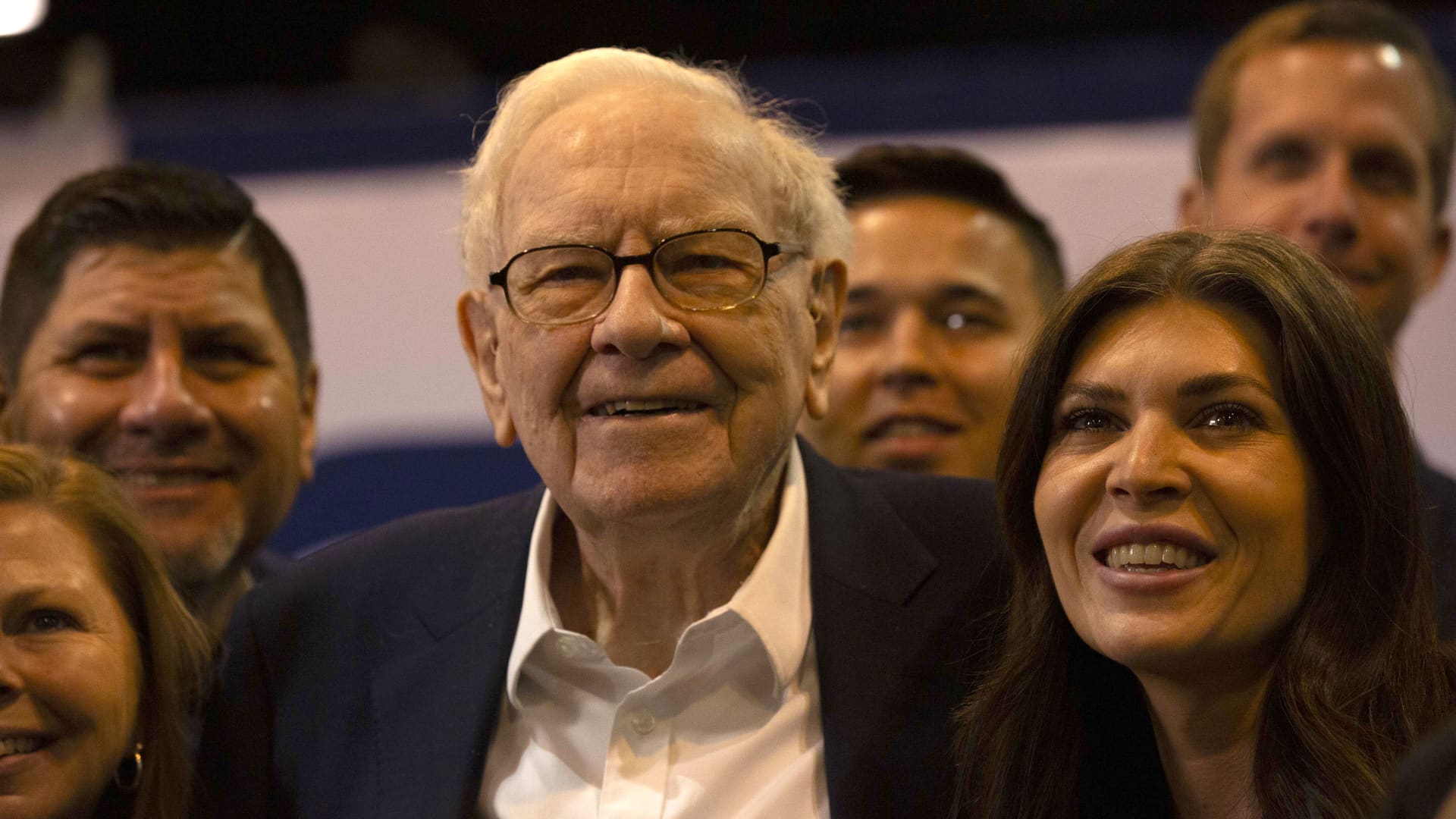15 strategists predict where the S&P 500 will end 2023 — and how to position for it

Stocks have rallied hard so far this year. But the impressive returns have also made some investors nervous about the market’s ability to hold on to the gains for the rest of 2023. CNBC Pro surveyed 15 market strategists at investment banks and asset managers between July 3-7, asking them to lay out what they expect from stock markets in the second half of this year. The respondents also shared their views on how investors should be positioned and the most significant market risks. We also see the Fed holding rates throughout 2024, contrary to market pricing of multiple rate cuts, creating headwinds for equities. Head of Investment Strategy for iShares EMEA, BlackRock Karim Chedid The Fed The majority of strategists mentioned the Federal Reserve as a significant factor influencing their view of the stock market’s trajectory, either upward or downward. The U.S. central bank’s unprecedented increase in interest rates was a major contributor to last year’s negative returns as stocks began repricing their valuation multiples. This scenario is likely to be revisited later this year as the Fed is expected to keep rates higher for longer, according to most strategists surveyed. It comes after Fed Chair Jerome Powell said last month that more rate rises were likely and reiterated the bank’s policy to tame high inflation. Karim Chedid, head of investment strategy for iShares EMEA at BlackRock, believes the Fed will continue with its restrictive monetary policy “despite a decline in macro conditions, given the focus on bringing inflation to target.” “We also see the Fed holding rates throughout 2024, contrary to market pricing of multiple rate cuts, creating headwinds for equities,” Chedid added. The bullish view Just four of the 15 strategists expect the S & P 500 to end the year higher than current levels, albeit very slightly. Binky Chadha, chief global strategist and head of asset allocation at Deutsche Bank, was the most optimistic, though he struck a cautious tone. He expects the S & P 500 to end the year at 4,500 — up 2.3% from its current level. This relatively low upside reflects Chadha’s view that markets will “grind higher” over the next six months. He does not expect a significant correction due to the well-telegraphed potential recession. “We expect a number of sell-offs but of the more garden 3-5% variety, and of 5-10% around a recession,” he added. … the average international stock continues to outpace the average U.S. stock … Chief investment strategist, Charles Schwab Liz Ann Sonders Similarly, Ken Peng, head of Asia investment strategy at Citi Global Wealth Investments, is relatively bullish but doesn’t see a significant upside for markets. Instead, Peng said the S & P 500 ‘s performance will likely broaden over the second half of this year. “The S & P 500 is likely to remain not far from where we are currently, but the additional performance is likely to be more widespread across the index,” Peng said. He added that investors should diversify from Big Tech stocks to small and medium-sized growth names. .SPX 1Y mountain Several strategists cautioned that the narrow breadth of the stock market’s rally this year exposes it to a rapid downturn if the index’s heavyweights stumbled. Bank of America’s top equity strategist Savita Subramanian said just 25% of the stocks in the benchmark U.S. index pulled the whole index higher by 16% in the first half. She expects the S & P 500 to remain flat by the end of the year at 4,300. However, her colleague, BofA European Equity Strategist Andreas Bruckner expects the pan-European Stoxx Europe 600 index to end at 390 — a 13% decline over 2023, and continue to fall further next year to 380. Liz Ann Sonders, chief investment strategist at Charles Schwab, cautioned that the S & P 500’s 24% rally since its October lows makes it look “fairly frothy” right now. That said, she doesn’t expect the market to retest last year’s lows again, barring an unexpected shock to financial markets. Sonders sees stock markets outside the U.S. participating in a healthier bull market. “While U.S. and international stock are both up measured by capitalization-weighted indexes this year, the average international stock continues to outpace the average U.S. stock, offering a broader base of support for the bull market in developed international stocks,” she said. The bearish view Nine of the 15 strategists surveyed by CNBC Pro expect the stock market to decline in the second half from current levels. While some said a correction, or a 10% decline, is possible, none foresee a bear market. … reduce your equity exposure so that you have some buying power in a drawdown and don’t be heroic. The front of the yield curve is a bit of a gift at 5%. Head of cross-asset strategies, Nomura Private Capital Matt Rowe According to those with a more negative view, the biggest risk facing markets was a misguided outlook for the U.S. economy. “Stocks are already priced for the near perfection of a soft landing, in our view,” said Mark Haefele, chief investment officer at UBS Global Wealth Management. “The risk is that the Federal Reserve continues to hike rates further, and/or the accumulated impact of the 500bps [basis points] of rate increase delivered so far is sufficient that consumer spending cracks and the U.S. economy is pushed into recession — a hard landing.” UBS expects the S & P 500 to end the year at 4,100 — a drop of 7% from current levels. Christian Abuide, head of asset allocation at Lombard Odier, and Frederique Carrier, head of investment strategy at RBC Wealth Management, expect the S & P 500 to end the year at 4200 and 4250, respectively. “The market rally from the September lows has moved far enough to turn many skeptics into believers,” said Carrier, adding that international equities will fall alongside U.S. stocks in a downturn. “If the U.S. stock market falls due to a recession, it would be very unusual for other stock markets not to follow. A U.S. recession has always been associated with bear markets in the U.S. and other regions.” We would avoid small-caps, emerging markets, and the Consumer Discretionary and Real Estate sectors. Senior Global Market Strategist, Wells Fargo Investment Institute Sameer Samana Similarly, Matt Rowe, head of cross-asset strategies at Nomura Private Capital, said that while the U.S. benchmark index could fall between 3%-10%, there was a bigger downside risk to the tech-heavyweight Nasdaq 100 index. “The biggest risk in my mind is the NDX … too high too fast [year to date],” he said. How to position Rowe suggested that investors should consider fixed-income assets, rather than risking capital on equity. “I think investors should be looking to move up the capital structure into debt, opportunistically, reduce your equity exposure so that you have some buying power in a drawdown and don’t be heroic. The front of the yield curve is a bit of a gift at 5%,” he added. Wouter Sturkenboom, chief investment strategist for EMEA and APAC at Northern Trust, agrees. “We are underweight equities and overweight high-yield bonds to trim our risk position.” Sturkenboom expects U.S. stocks to decline by 5-10% over the next six months. Sameer Samana, a senior global market strategist at Wells Fargo Investment Institute, believes investors could hide in large-cap higher-quality U.S. companies operating in the materials, energy, and healthcare sectors if a downturn occurs. “We would avoid small-caps, emerging markets, and the Consumer Discretionary and Real Estate sectors,” Samana said, adding that he expects “choppy sideways action” for the S & P 500 to close the year at 4,000-4,200.









